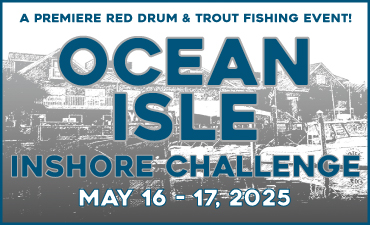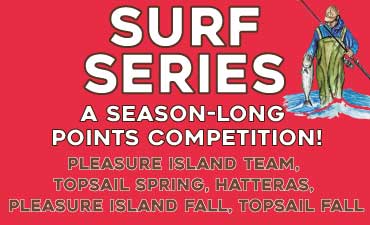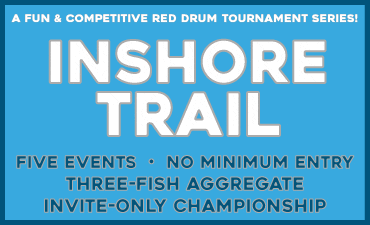Ocean Isle/Holden Beach – March 2025
Jeff, of Ocean Isle Fishing Center, reports that anglers getting out are mostly targeting red drum in the backwaters and around structures (such as pilings) in the ICW. Both cut shrimp or live mud minnows will be best in enticing bites.
Anglers can find some speckled trout action. Most of the trout are hitting live mud minnows in deeper holes in the backs of mainland creeks and canals.
The whiting bite should be showing up anytime in the coming weeks. Anglers will start by finding these schools in deeper areas around river mouths and out around the inlets. A simple chicken rig tipped with cut shrimp dropped into deeper (15-18’+) areas will be the trick to getting action.
The area also sees some gray trout mixing in these same deeper inshore and inlet areas, with keepers to be mixed in with shorts. Anglers fishing around the inlet are also finding some sheepshead around structure.
Brant, of Ocean Isle Fishing Center, reports that the more reliable action right now is being found in the 50-90’ area where anglers are catching a bunch of large black sea bass. As temperatures slowly start to warm up, the more consistent bite will be found on the deeper (70-90’) end of that range.
Getting out to structure in 100’+ can also see vermilion snapper and triggerfish in the mix.
When getting out to do some Gulf Stream trolling, anglers are finding blackfin tuna scattered around, as they are all winter long.
Wahoo fishing should start to pick up moving through March, but more likely it will be in April.
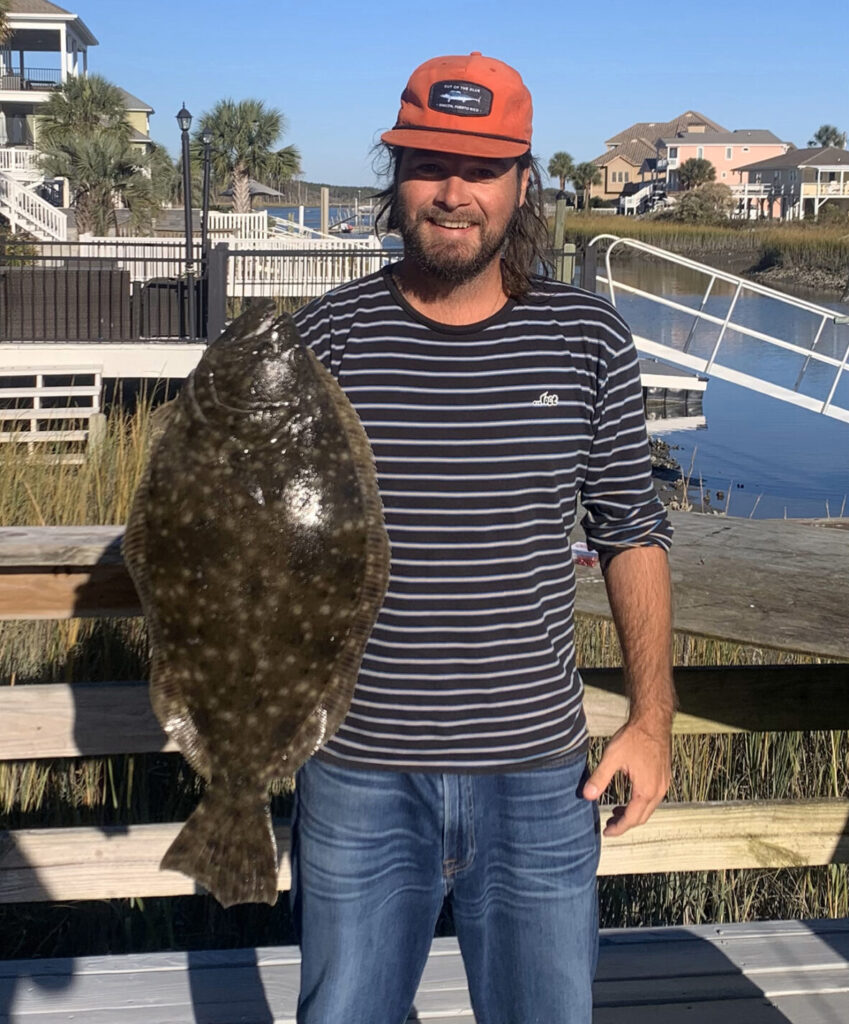
Timmins Mervin, of SC, caught (and released) this 25″, 5.8 lb. flounder off a dock in the Cherry Grove area using a mullet on a Carolina rig.
Tim, of Tideline Charters, reports that late February through April is usually when the area sees its biggest class of speckled trout. These fish are caught with larger artificial baits, live shrimp, and topwater plugs, and they only get more active as the weather warms up. These fish will be moving through the creeks and leaving the canal systems to stage up around the inlets and the Little River jetties. Look for periods in the tide when the water is moving quickly. Rising or falling doesn’t matter, as movement is key for finding these fish. Another good spot to check are shell banks along the ICW that not only hold trout but also red drum.
The red drum are still heavily schooled up back in the shallow waters. A low to rising tide is the best time to target these fish in areas that are shallow. Smaller soft plastics are typically the top lure to throw. Usually, a natural-colored bait that blends in with the sand or mud bottom produces best. Be sure to work your baits very slow and tight to the bottom.
Deep water docks along the ICW will hold both black drum and sheepshead, as well as scattered redfish. Dead shrimp and crabs will be the bait of choice for these species. Targeting the lower ends of the tide seems to be the most successful period.
Tripp, of Capt’n Hook Outdoors, reports that when a window arises to make a run to the Gulf Stream, trips should produce wahoo and blackfin tuna.
The bottom fishing has been, and will remain, strong with catches of quality black sea bass, vermilion snapper, and some grouper (that need to be released until keeper season opens).
Inshore, the red drum bite has been great and will only improve as temperatures start to warm up. The red drum are still schooled up tightly in the shallow creeks and around docks. Low tide is a great time to target these fish, and they seem to be feeding a little better with warm or sunny days bringing up water temperatures. Dead shrimp on a jig head or any type of soft plastic makes a good option for targeting these reds. As conditions warm, the redfish will start to move out of the creeks and stage up more around docks in the ICW and near the jetties.
Black drum will be mixed in with the reds, as well as around areas of structure.
The speckled trout fishing has been a little slow, but the action will pick up as conditions warm up. Shell banks along the waterway and the jetties will be great places to target them, and this is the best time of year to catch a big one. Live shrimp, soft plastics, and MirrOlures will all make great options.
The sheepshead fishing right now has been great and will remain that way into spring. Docks in the ICW and the jetties are great places to target them.
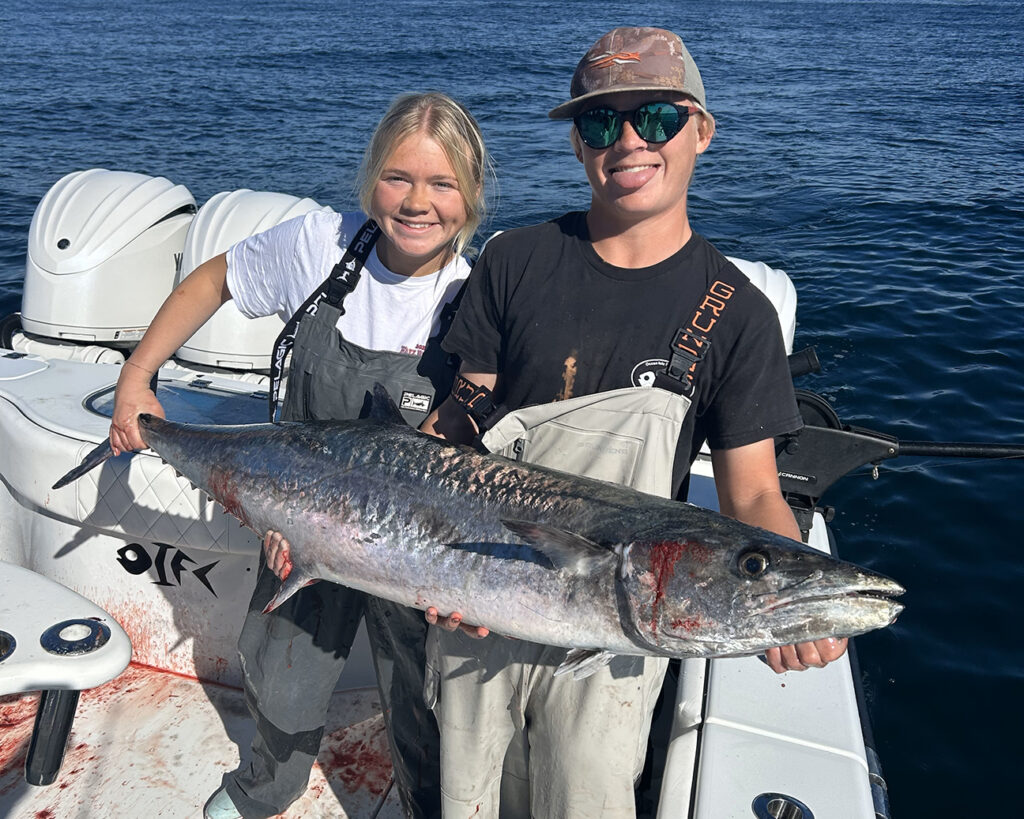
Caroline and Brayden McMullan, of Ocean Isle Beach, landed this 52 lb. king mackerel offshore of Ocean Isle Beach in 50′ of water. They were fishing with Capt. Brant McMullan on the OIFC Freeman.
Todd, of Rigged and Ready Charters, reports that when you can get a window to hit the bottom structures from 10-miles to the Frying Pan Tower, anglers are catching some quality black sea bass and other mixed bottom species. A classic double drop rig with squid will get strikes, but slow pitch jigs are providing more fun to the action.
When out on the break, anglers are catching some wahoo using ballyhoo under purple/black colored skirts.
It’s a good idea to keep a cedar plug out on these trolling trips for the blackfin tuna that are also around.
Philip, of Rod and Reel Shop, reports that March is when the area usually sees some large whiting and the first bluefish showing up in the surf. A few pufferfish have already been caught, and this bite should only get better in the coming weeks.
Anglers fishing cut shrimp both in the ICW and from the surf are catching some black drum.
Inshore anglers are finding that the speckled trout action is picking up, with some larger fish in the mix.
Fishing nearshore structure is producing good action on keeper sea bass.



